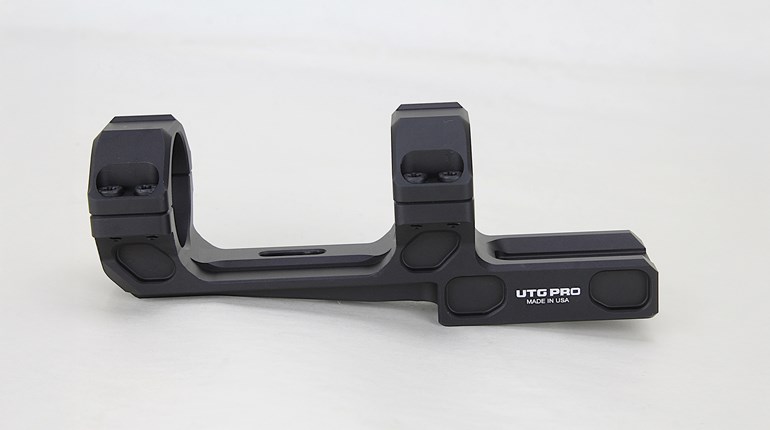
From the vault: Training tips for silhouette shooting with Marguerite Everheart-Hazey. As transcribed from a 1984 NRA Silhouette National Championship seminar where she was a panelist.
Training Techniques For Silhouette
By Marguerite Everheart-Hazey
When you shoot silhouette, you have to shoot offhand, and offhand is the hardest position there is, because you are on your two feet with no support at all. You have to make offhand a fun game. Always remember, competitive shooting is a sport that you should enjoy.
I do a lot of dry firing, and am very serious about it. I dry fire as if I were out at the range but with no wind conditions and no distractions. I turn the TV and radio off, and unplug the telephone. I dry fire with all my equipment and make my shots count. When you dry fire, you can see if you are flinching. In addition, when you dry fire, you must follow through. Follow through is a major factor when it comes to hitting the target.
Before a big match, I get up at four o'clock in the morning and go out to the range before the sun comes up, so I can get a wind zero and correct elevation for all my ranges.
Equipment is important, but if you don't have the proper mental attitude, you're not going to do very well.
I feel that a good percentage of this game is mental. You have to have a good mental attitude to be competitive. You have to have confidence in your ability. Equipment is important, but if you don't have the proper mental attitude, you're not going to do very well. You have to believe in your calls and your shots. Think your way through a match. Don't worry about what you've already shot. Worry about what you are goin to do next. Matches are won when the last shot is done. Don't worry about what is over with; you can't do anything about that. Instead, work harder on what is coming up.
My background is in smallbore, and I have learned that you must find the position that's best for you. Women can use their hip to rest the gun; men usually can't. I've also learned that sight alignment and sight picture are very important. In smallbore, we use the word "BRASS" to remind us to breath, relax, aim, sight and squeeze. As mentioned previously, your follow through is crucial. If you think a shot was good, but it's not where it should be, do what you have to do to correct for it. You can move your sights, or you can move your body position. If you pull up on an animal and find that you're favoring to the right, you can move your back leg. Change what you think you have to.
Before a match, I try to make sure that all my loads are good, and that all my equipment has been tested and is in good condition. In a match, I try to do the same things I do at home in practice.
Q: How much practicing do you do before a match?
A: I try to go through a whole course or a double course. If you get your body used to shooting an 80-shot match, and are able to go home afterwards and do whatever you want, you will be in good shape on the day of the tournament. Many smallbore shooters feel you are all right if you can go out to the range and stay for eight hours without being mentally tired. Even though you will be shooting in two-hour segments, you know you can last a full eight hours if something happens, or the range breaks down.
Q: When you are dry firing, how large is your wobble area? Does the dot move when you pull the trigger?
A: It moves. I can't hold dead center. In high power shooting, we shoot with an aperture sight which has to be perfectly aligned. It's much harder than shooting with a scope. With a scope, all you have to do is make sure that you have a clear field of view, and you will focus automatically on your dot or crosshair. With an aperture, you have to be aware constantly as you are coming in to the target. There is a point in time as you are squeezing the trigger when it stops—that's when you fire the shot. When I dry fire, I know when it's going to stop, and that's when I pull the trigger. If I try, I can convince myself that I can hold dead center on an animal. Everyone has a wobble area; some shooters have a huge wobble area. You just have to work on it and not let it bother you.
Q: Can you describe a good execution and follow through?
A: To ensure I have a good shot, I am careful to be sure that my position is right and that the gun is into my shoulder each and every time. After I shoot the shot, I call where the shot should have gone and then compare that to where it actually hits. I make sure I have done everything exactly the way I have done it before. I let the recoil just take me back. In smallbore, though, there's not enough recoil to push your shoulder so you can see the animal through the sights. If you can see the animal fall, you know you have not moved off the target. In high power, since you are in recoil, you may not be able to see that happen. You must maintain your position long enough to allow the bullet to exit the barrel without moving the rifle. You must not hurry to get the gun off your shoulder.
Q: Do you use a rapid squeeze?
A: I just come straight back. My trigger finger works independently from the rest of the fingers on my hand, so I can grip the stock any way I want and be able to pull straight on back.
Q: Do you use any mental training exercises before you shoot?
A: I picture myself shooting a string following all the fundamentals including sight picture, breathing and follow through. When I shot smallbore, I was taught to visualize myself on the firing line doing all these things correctly and then, mentally, move up to the firing line and feel myself shooting the shots. I will do this either before the match or just before I shoot.
Q: Do you keep a permanent record or scorebook?
A: I keep a scorebook and mark down both my call and where I hit. I feel it's helpful because conditions can vary from range to range. My wind zero is different in Raton than it is in Albuquerque. With a running record of various ranges, you are aware of the differences and don't get flustered.
Q: Is there any difference between your zero off sandbags and your offhand zero?
A: For me, no. I shoot with a canted rifle and since the cant is built into the scope, I cant the rifle the same way when it's on the sandbags. If you have your sandbags on the back of your stock so your shoulder is just touching the gun and not moving it, your zeros will be the same. Benchrest shooters only want to have their fingers touch the stock—nothing else.
Q: Do you pull the rifle in with your right hand?
A: Depending on conditions, I will do it both ways. If it's real windy, I pull the rifle in and get a tighter position. Under normal conditions, I just pull straight back, but it's not tight.
Q: Are you constantly changing your position as a result of your dry fire experimentation?
A: I change my position according to the range. If the range is not level, I change my position to compensate. When I dry fire my first round, I know whether I'm high, low, right or left and adjust from there. Usually, I can line up on a target without worrying about it.
Q: Does your hold have a particular pattern?
A: No, because I come from the top of the berm down to my animal. By the time I get to my animal, I have the wobble into the animal and have picked a point I want to shoot at on the animal.
Q: Do you find that you concentrate on the dot or the animal?
A: I concentrate on the dot, not the animal. The animal is not going to go anywhere; the dot is what's moving. Your eye really can't focus on two things at once, so focus on the dot and pick the animal up in the process.
Q: Does recoil bother you?
A: Yes, recoil bugs me, but after a while, I get used to it. When I started shooting again after my baby was born, I really felt it in my shoulder. You have to accept the fact that it's going to hit you whether you jerk it or follow through. If you jerk, it's going to hurt a little more, and you are not going to hit your animal. Recoil is always going to be there in a .30-cal. gun; there is nothing you can do to make it stop. I just put it out of my mind.
Q: Do you have any diet considerations?
A: I try to avoid drinking anything with caffeine during a match. I don't normally drink coffee, because I'm allergic to it, although I do drink tea and Coke. I've been on a diet lately, but when I'm shooting, there are no holds barred. If you really work at this game, it takes a lot of energy out of you. You use energy going back and forth, up and down the line, and there's a huge mental strain.
Q: Do you eat during a match?
A: I try to eat fruit and other things that don't require a lot of energy to digest. I try to keep something in my stomach because I can't shoot when my stomach is growling. I eat breakfast, which often consists of milk and English muffins. If you get too full, you will feel tired.
See more: Silhouette Trigger Control Nuances



































